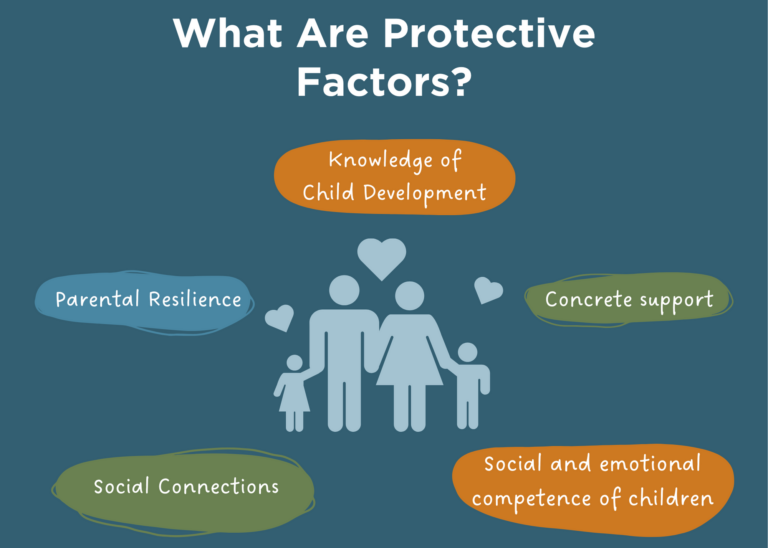Protective Factors: What They Are and Why We Need Them

Written by Susanna
Communications Coordinator

Every 10 seconds, a report of child abuse or neglect is made to child protection agencies. In Missouri alone, there were 5,465 substantiated cases of child abuse and/or neglect in 2018. These are sobering statistics, but child abuse IS preventable. At Good Samaritan, we work to prevent child abuse by promoting protective factors!
So, what are protective factors? How do they work? And can they really prevent child abuse?
Let’s dive in! According to the Child Welfare Information Gateway, there are 6 key protective factors that can help prevent child abuse:
Nurturing and Attachment
Babies and young toddlers do not have the ability to remember concrete events. However, they do store implicit memories which is why their early life experiences are so important! Implicit memories, while not directly remembered, can influence a child’s later experiences and reactions. A child who receives nurturing and affection from the adults in their lives during those early years have a better chance for healthy development.
Knowledge of Parenting and Child Development
You don’t need me to tell you that parenting is hard. Every parent has had those moments where their patience is stretched to its limits. However, concrete knowledge of parenting and child development can help make those difficult moments more manageable (or at least provide some understanding of why your toddler is throwing a tantrum because you asked them to put on a shirt on). But in all seriousness, having knowledge of parenting and child development is empowering and can ultimately lead to healthier kids.
Parental Resilience
Having parental resilience means having the ability to deal with life’s stressors in a healthy way while caring for your children. However, parents who find themselves facing adversity such as poverty, homelessness, health problems, etc., may find it more difficult to effectively cope. This is not the fault of the parents. Rather, this simply highlights the need for increased support given to families going through a crisis. While developing parental resilience in adverse situations is difficult, it is not impossible.
Social Connections
Humans are social creatures and isolation can be a highly detrimental experience. This is why families who do not have reliable support networks and social connections often have a more difficult time handling crisis in a healthy way. Social connections prevent isolation and provide parents with people to come to for guidance and support when they are struggling.
Concrete Supports for Parents
Concrete supports are often come in the form of community resources available to parents. For example, Good Samaritan’s Family Stabilization program is a concrete support! These supports provide more than a listening ear—they work with families to identify and meet their needs. Families experiencing a crisis, but who have reliable, concrete supports are more likely to manage the experience in a healthy way.
Social and Emotional Competence of Children
Last but not least! Children who are taught how to express and communicate their emotions tend to build stronger relationships with their family and friends. Teaching children these skills can help them thrive inside and outside their homes.
There you have it! When these protective factors are present, children are far less likely to experience abuse and/or neglect. At Good Samaritan, we serve families in crisis by providing them with concrete support aimed at helping them develop these protective factors. Strengthening families in crisis is key to breaking cycles of abuse.

